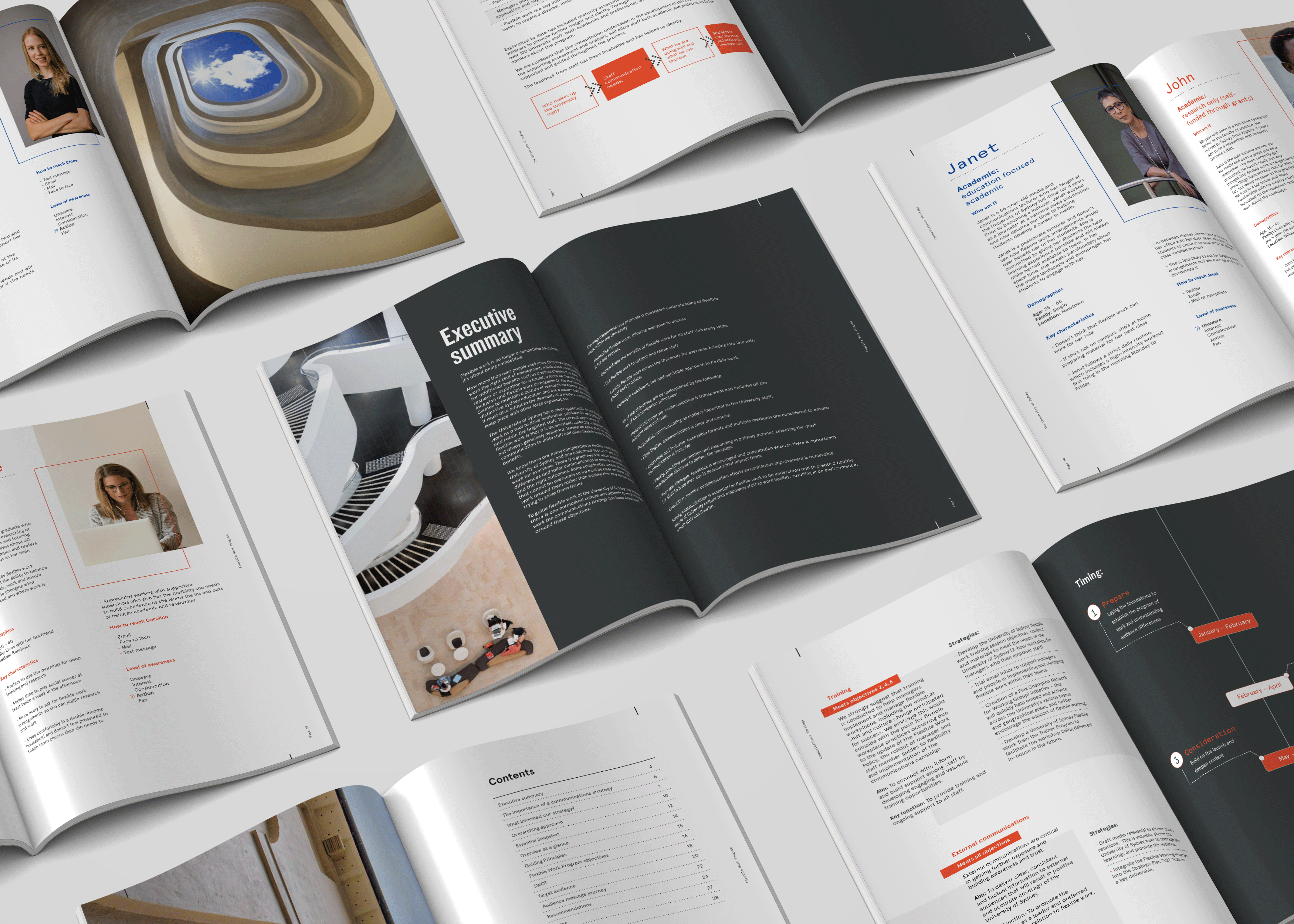Human motivators and needs
Direction setting
Normalising flexible work – University of Sydney
2021
University of Sydney
How might we develop a change communications plan that we are able to implement?
The University of Sydney, a prestigious university known for its academic excellence, recognised the potential of workplace flexibility as a competitive advantage. However, in a world less accepting of flexible work arrangements before the onset of Covid-19, the university faced the challenge of normalising and promoting this concept among its staff.
The challenge was to change the conversation and attitude towards flexible work at the University of Sydney. This required a comprehensive communications strategy that would not only convey the benefits of flexible work but also engage and educate staff across the university. There was also a need to bridge existing gaps in understanding and perception.
Our approach to addressing this challenge added significant value for the University of Sydney:
- Workshop insights
We began by analysing the findings from a series of workshops conducted by the university. These insights formed the foundation of our strategy, highlighting areas that needed further exploration. - Staff survey
To gain deeper insights, we designed and conducted a staff survey, filling the gaps in our understanding and ensuring that the strategy was based on comprehensive data. - Practical strategy
Our strategy took a practical approach, employing a campaign framework to effectively communicate with staff. It aimed to make the benefits of flexible work tangible and relatable to university employees. - Visual communication
We leveraged well-designed one-page diagrams to visually explain the advantages of flexible work. These visual aids simplified complex concepts, making them easily digestible for staff. - Customer personas
We developed a suite of customer personas to define specific segments that the strategy would target. This ensured that the communication approach was tailored to the unique needs and perspectives of different staff groups.
Greater value was achieved by:
- Cultural shift
The communications strategy played a pivotal role in encouraging a cultural shift towards flexible work within the university. - Enhanced understanding
The use of visual aids and well-defined personas made the concept of flexible work more accessible, enhancing staff members’ understanding of its benefits. - Engagement
The campaign approach engaged staff across the university, encouraging them to explore and embrace flexible work arrangements. - Data-driven insights
The staff survey provided valuable data-driven insights, ensuring that the strategy was based on a thorough understanding of staff needs and perceptions. - Segmented approach
Targeting specific segments through customer personas allowed for tailored messaging, increasing the relevance and impact of the communication efforts.

